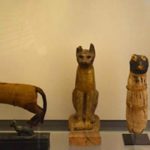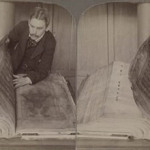Elamite Helmet with Sacred Figures and Bird, Bronze and Gold, Southwestern Iran, around 1500–1100 BC, The Met.

The helmet, dated to approximately 1500–1100 BC, hails from Southwestern Iran and is a remarkable artifact from the Elamite civilization. This exquisite piece is crafted from bronze and adorned with gold foil over bitumen, showcasing the sophisticated metallurgical skills and artistic sensibilities of the Elamites. Now housed in The Met, this helmet is a testament to the rich cultural and artistic heritage of ancient Elam.
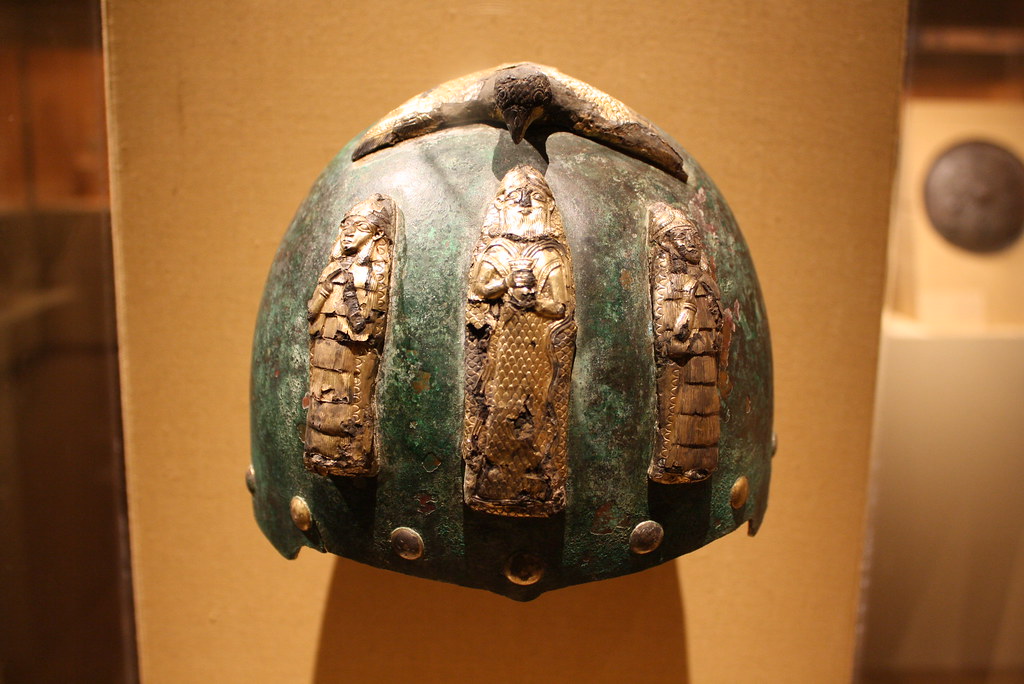
The helmet is adorned with divine figures, meticulously crafted beneath a bird with outstretched wings. This bird, likely an eagle or a falcon, symbolizes power and divinity, common themes in the iconography of the ancient Near East. The outstretched wings of the bird convey a sense of protection and divine oversight, suggesting that the wearer of the helmet was under the aegis of the gods.
The divine figures depicted beneath the bird add a layer of spiritual significance to the helmet. These figures may represent deities or demigods, revered in Elamite religion and mythology. The presence of these divine images implies that the helmet was not merely a piece of military equipment but also a ceremonial object imbued with religious and symbolic meaning. It might have been worn by a high-ranking individual, possibly a priest or a warrior king, during rituals or in battle to invoke divine protection and favor.
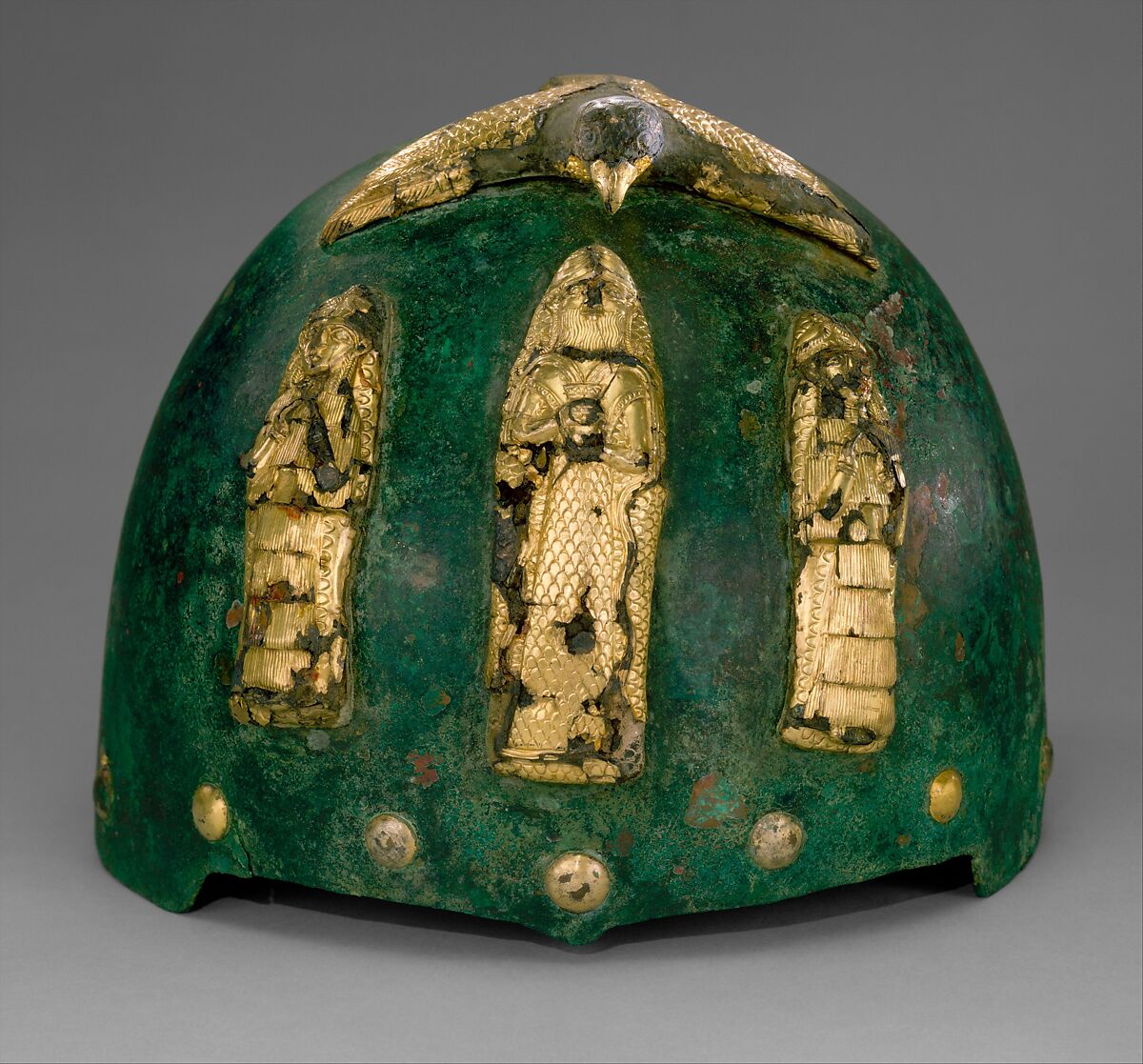
The use of gold foil over bitumen to decorate the helmet demonstrates the Elamites’ advanced techniques in metallurgy and their aesthetic preferences. Gold, a precious and enduring material, signifies wealth, power, and divine favor. The combination of bronze and gold also indicates the helmet’s dual function as both a practical piece of armor and a status symbol. The bitumen, used as an adhesive, highlights the resourcefulness of Elamite artisans in utilizing available materials to enhance the beauty and durability of their creations.
The geographical origin of the helmet, Southwestern Iran, situates it within the heartland of the Elamite civilization. This region was a melting pot of cultures and influences, situated between Mesopotamia and the Iranian plateau. The Elamites, known for their distinctive language and culture, played a crucial role in the political and cultural dynamics of the ancient Near East. Artifacts like this helmet provide valuable insights into their societal structure, religious beliefs, and interactions with neighboring civilizations.
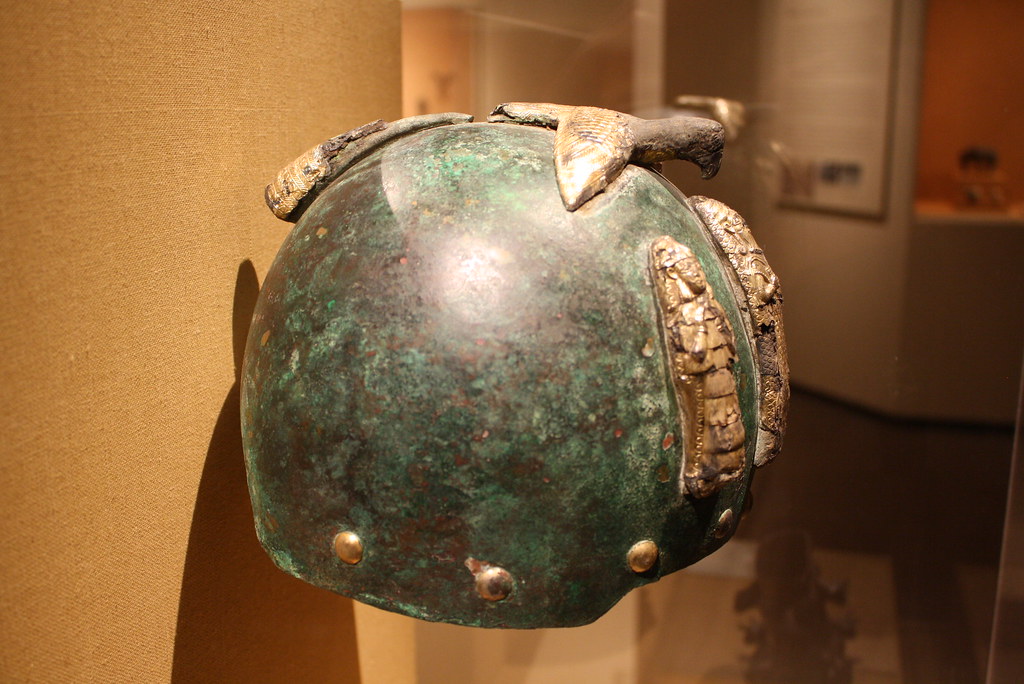
Currently part of The Met’s collection, this helmet offers visitors a glimpse into the rich tapestry of Elamite culture. It stands as a silent witness to the artistic achievements and spiritual life of a civilization that flourished over three millennia ago. By preserving and displaying such artifacts, The Met not only safeguards the cultural heritage of ancient Elam but also fosters a deeper understanding of humanity’s shared past.
In conclusion, the Elamite helmet with divine figures beneath a bird with outstretched wings is a remarkable artifact that encapsulates the artistic, religious, and cultural essence of its time. Dated to circa 1500–1100 BC and originating from Southwestern Iran, it reflects the sophisticated craftsmanship and profound symbolism characteristic of the Elamite civilization. Through its preservation in The Met, this helmet continues to inspire and educate, connecting contemporary audiences with the rich legacy of ancient Elam.


